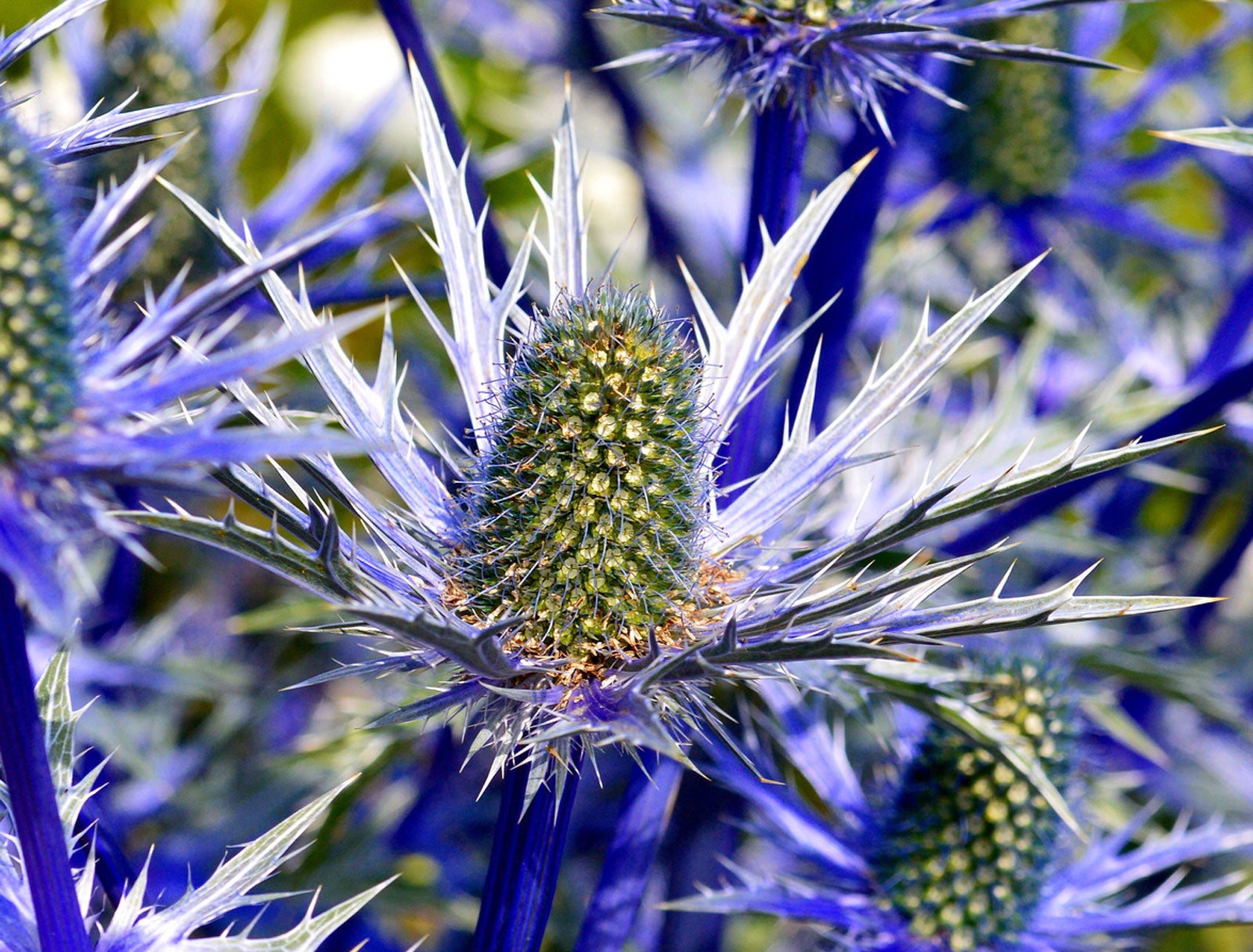How To Grow And Care For A Sea Holly Plant
So you want to learn how to grow and care for sea holly plants? You've come to the right place. Sea holly is a fascinating and beautiful plant that adds a unique touch to any garden. Here, we will cover the basics of growing and caring for sea holly plants, as well as tips on pruning, propagating, and potting.
:max_bytes(150000):strip_icc()/GettyImages-922619186-3ee3de61cfc0461a8369ed04ac037108.jpg)
Plant Attributes
Sea holly plants, also known as Eryngium, are native to Europe, but can also be found in other regions around the world. These plants are characterized by their spiky, thistle-like appearance and vibrant blue or purple flowers that bloom in the summer.
Sea holly plants are typically drought-resistant and grow best in full sun or partial shade. They prefer well-draining soil and can thrive in various soil types, including sandy or rocky soil.
Plant Care
To care for your sea holly plant, make sure to water it regularly during the growing season, but be careful not to overwater. The plant's roots should not sit in standing water, as this can lead to root rot. Additionally, sea holly plants need to be fertilized monthly during the growing season with a balanced, all-purpose fertilizer.
When it comes to pruning, it's best to cut back the plant in the spring to promote new growth. You can also remove any dead or damaged leaves throughout the year to keep the plant looking neat and healthy.
Propagation
Sea holly plants can be propagated by seed or division. If propagating by seed, it's best to start the process indoors in the late winter or early spring. Sow the seeds in moist soil and keep them in a warm location until they germinate. Once the seedlings have grown a few inches, they can be transplanted to larger containers or outside in the garden.
Alternatively, you can propagate sea holly plants by division. This involves digging up the plant, separating the root ball into smaller sections, and replanting them in new locations. This should be done in the spring, just as new growth is starting to emerge.
Potting & Repotting
Sea holly plants can be planted in containers, but they require deep-rooted pots that are at least 12 to 14 inches in diameter. Make sure the container has adequate drainage holes to prevent water from sitting in the pot.
If you need to repot your sea holly plant, do so in the spring before new growth begins. Choose a pot that is slightly larger than the current one and fill it with fresh soil. Make sure to water the plant thoroughly after repotting.
Common Pests & Plant Disease
Sea holly plants are generally resistant to pests and diseases, but they can occasionally fall prey to aphids or other insects. If you notice any bugs on your plant, you can try spraying them off with a strong stream of water or using an insecticidal soap.
In terms of disease, sea holly plants can develop root rot if they are overwatered or planted in soil with poor drainage. Make sure to let the soil dry out between watering to prevent this from happening.
Common Problems
The most common problem with sea holly plants is their tendency to self-seed aggressively. If you don't want your plant spreading too far, make sure to deadhead the flowers before they go to seed. Additionally, if you are growing sea holly in a garden, it's best to keep it away from other plants as it can spread and overtake their space.
Overall, sea holly plants are a beautiful and unique addition to any garden. With proper care and maintenance, your sea holly plant will thrive and bring joy for years to come.
:max_bytes(150000):strip_icc()/GettyImages-922619186-3ee3de61cfc0461a8369ed04ac037108.jpg)
:max_bytes(150000):strip_icc()/eryngium--sea-holly-522046432-59f08cbfd963ac0010737c57.jpg)

Post a Comment for "How To Grow And Care For A Sea Holly Plant"